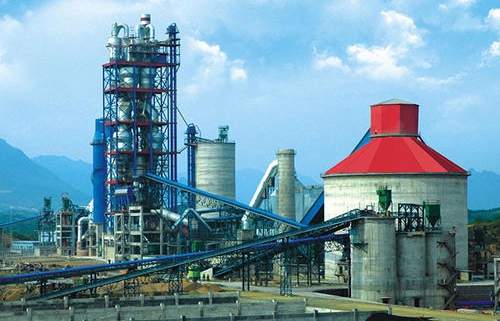The collapse of preheater is a common problem in the actual production of kiln system. It not only affects the thermal efficiency of the firing system and the operation rate of the kiln, but also results in the blockage of the precalciner system or the tempering of the kiln head, resulting in personal injury accidents.
- Cause analysis of material collapse
Collapse refers to the uneven flow or accumulation of raw material in the preheater, resulting in a large amount of raw material concentrated from the cyclone cone into the outlet pipe of the next stage cyclone through the ash discharge valve and discharge pipe. However, the wind speed of the pipe is not enough to disperse and hold up the large amount of raw material, and the raw material directly collapses into the kiln through the cyclone or decomposition furnace. The main causes of material collapse in precalciner system are as follows:
1.1 uneven feed rate
The raw material is easy to collapse due to long time of pressing, large moisture content and poor looseness; the arch of feeding bin makes the raw material sometimes absent in the feeder; the rotation speed of screw feeder is unstable, resulting in uneven feeding, which is easy to cause material collapse.
1.2 the structure of cyclone is unreasonable
The inclination angle of cyclone inlet and vortex shell bottom is too small, and the horizontal section is too long. At the initial feeding stage, due to the small air volume of the system and low cross-section wind speed, a large amount of raw meal is easy to settle and accumulate in the small inclined angle and horizontal section. When the system air flow disturbance or pressure changes, a large number of materials suddenly slide down, resulting in material collapse
1.3 air leakage of cyclone cone outlet, ash discharge valve and discharge pipe
There are two types of air leakage in the pre decomposition system: external air leakage and internal air leakage. External air leakage refers to the cold air leakage from inspection hole, measuring hole, ash discharge valve, connecting pipe flange and cyclone hole door under the effect of system negative pressure. Internal air leakage refers to that when the ash discharge valve is burnt out and deformed or the counterweight is too light, the hot gas flow at the outlet of the next stage cyclone directly enters the cyclone through the discharge pipe and the cone outlet through the ash discharge valve.
- Several measures to reduce collapse
2.1 strictly control the moisture content of raw material out of mill and stabilize the feed quantity of raw material into kiln
The uniformity of raw meal composition is an important factor to determine the quality of cement clinker.
2.2 change the horizontal section of cyclone to the inclination angle to avoid material accumulation
2.3 a conical expansion bin is set below the cone outlet of the cyclone
The diameter of the cone outlet can be enlarged by setting a conical expansion bin under the cone of the cyclone, thus effectively reducing the possibility of material accumulation and arching at the bottom of the cone.
2.4 reasonably adjust the angle of ash discharge valve rod and its counterweight
2.5 skip the collapse danger area with low yield as soon as possible
The feeding range can be increased at the initial stage and slowed down after 80% feed rate.
At this time, the amount of material in the pre decomposition system has reached a certain extent, and the material flow is smooth. There are a lot of materials passing through the cone outlet of cyclone, ash discharge valve and discharge pipe at any time, which can inhibit the external and internal air leakage of the above parts. Therefore, there is little collapse, even if there is one, which has no impact on the operation. Therefore, it is said that the higher the NSP kiln output, the easier the operation is.


